Affiliate links on Android Authority may earn us a commission. Learn more.
What is Chrome OS Phone Hub and how do you use it?
Published onMarch 4, 2023
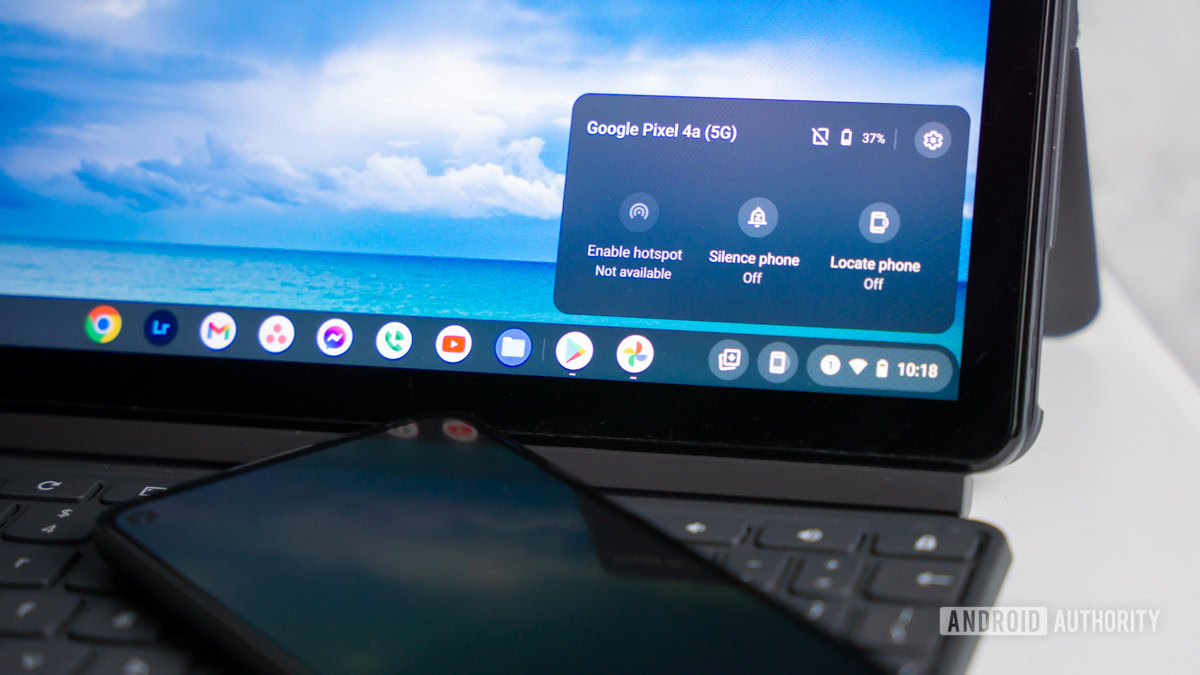
If there is one thing Apple beats Google at, it’s integration between devices. Macbooks, iPhones, iPads, and other Apple devices work seamlessly together, sharing files, messages, video calls, etc. Will the Google ecosystem ever reach such integration? It isn’t quite there yet, but things are improving, and the Chrome OS Phone Hub is a massive step in the right direction.
Also read: What is a Chromebook, and what can it do?
Chrome OS Phone Hub is Google’s solution for streamlining your Android and Chromebook experience, syncing certain elements, and letting Android and Chrome OS work together. We’ll tell you all about the topic in this feature, so let’s get right to it.
Editor’s Note: Instructions in this guide were put together using an ASUS Chromebook Vibe CX34 Flip running Chrome OS version 111.0.5563.54 and a Pixel 7 Pro running Android 13. Some steps may differ for you, depending on your hardware and software.
What is Chrome OS Phone Hub?
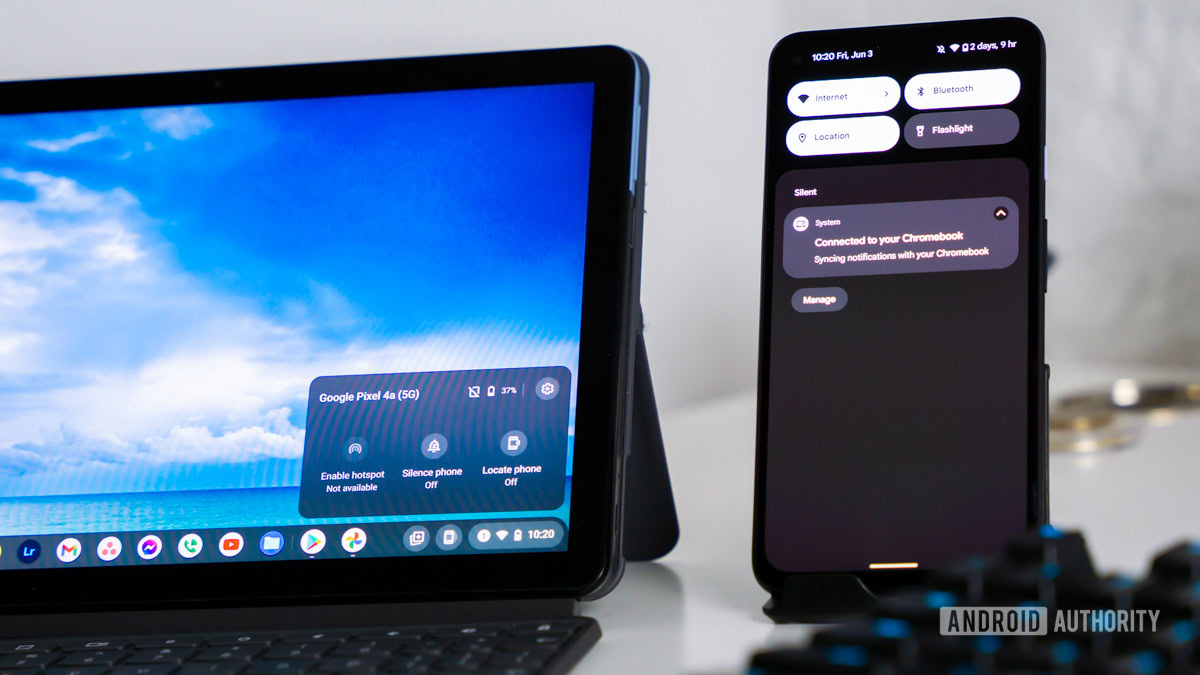
The Chrome OS Phone Hub is Google’s way to connect Android and Chrome OS in order to collaborate and work together. The feature is meant to offer a seamless experience when switching between Google devices, as well as improve the synergy between Chrome OS and Android.
With this feature, your smartphone can automatically share its data connection with your Chromebook. You can also send and receive texts through the Messages app and sync Wi-Fi networks across gadgets. It can also pull notifications and recently used Chrome tabs for quicker operations, or even use your phone as a Smart Lock connected gadget for quick unlocking.
Alternatively, the Chromebook can change a phone’s settings to a degree. It’s possible to silence your Android smartphone or locate the phone from Chrome OS. Additionally, you can view important information like the phone’s battery status or network conditions right from your Chrome OS laptop.
How to set up Chrome OS Phone Hub
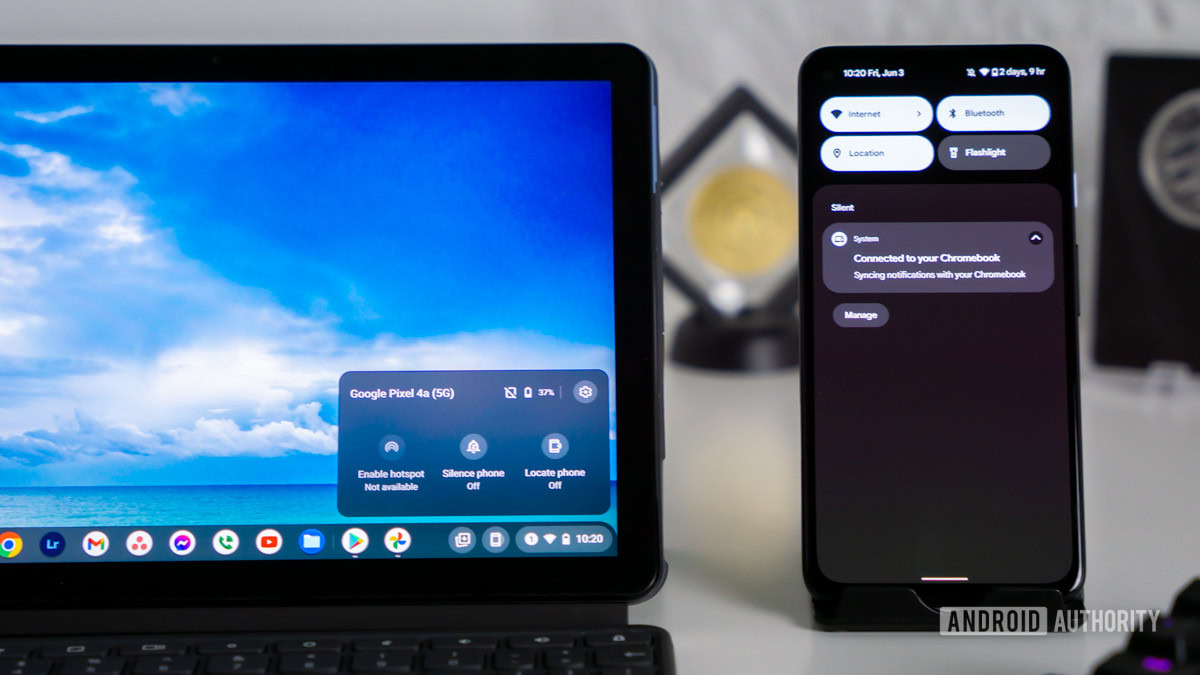
The Chrome OS Phone Hub is a native tool built into Chrome OS. It can be easily configured, with no need for extra applications or downloaded tools. It’s all built into the operating system, and setting it up is a breeze. You can do it all straight from the Settings, given that your Chromebook and Android phone meet the minimum requirements.
Chrome OS Phone Hub minimum requirements
- Your Chromebook needs to run version M89 or later. (How to update a Chromebook)
- The phone needs Android 5.1 or later.
Any relatively new Chromebooks or Android phones should meet these requirements. If yours do, set up the hub using the steps below.
How to set up Chrome OS Phone Hub
- On your Chromebook, open the Settings app.
- Go into Connected devices.
- Under Connected devices, you should see Android phone. Click on the Set up button next to it.
- Click on the Select a device dropdown menu and select the phone you want to connect to. All devices linked to your Google account should show up.
- Hit Accept & continue.
- Confirm your Google account by entering your password and selecting Done.
- Select Done again.
Connect your Messages app:
You’re almost ready for prime time! Sadly, the Chrome OS Phone Hub doesn’t automatically sync your Messages app. You’ll need to link it yourself. Let’s walk you through the process.
- Open the Messages app on your Chromebook.
- Select Continue.
- A QR code will show up.
- On your Android phone, open the Messages app.
- Hit the three-line menu button.
- Select Device pairing.
- Tap on the QR code scanner button.
- Scan the code that shows up on your Chromebook.
- Done! Your messages should sync. Now you can view and send text messages from your Chromebook.
How to use Chrome OS Phone Hub
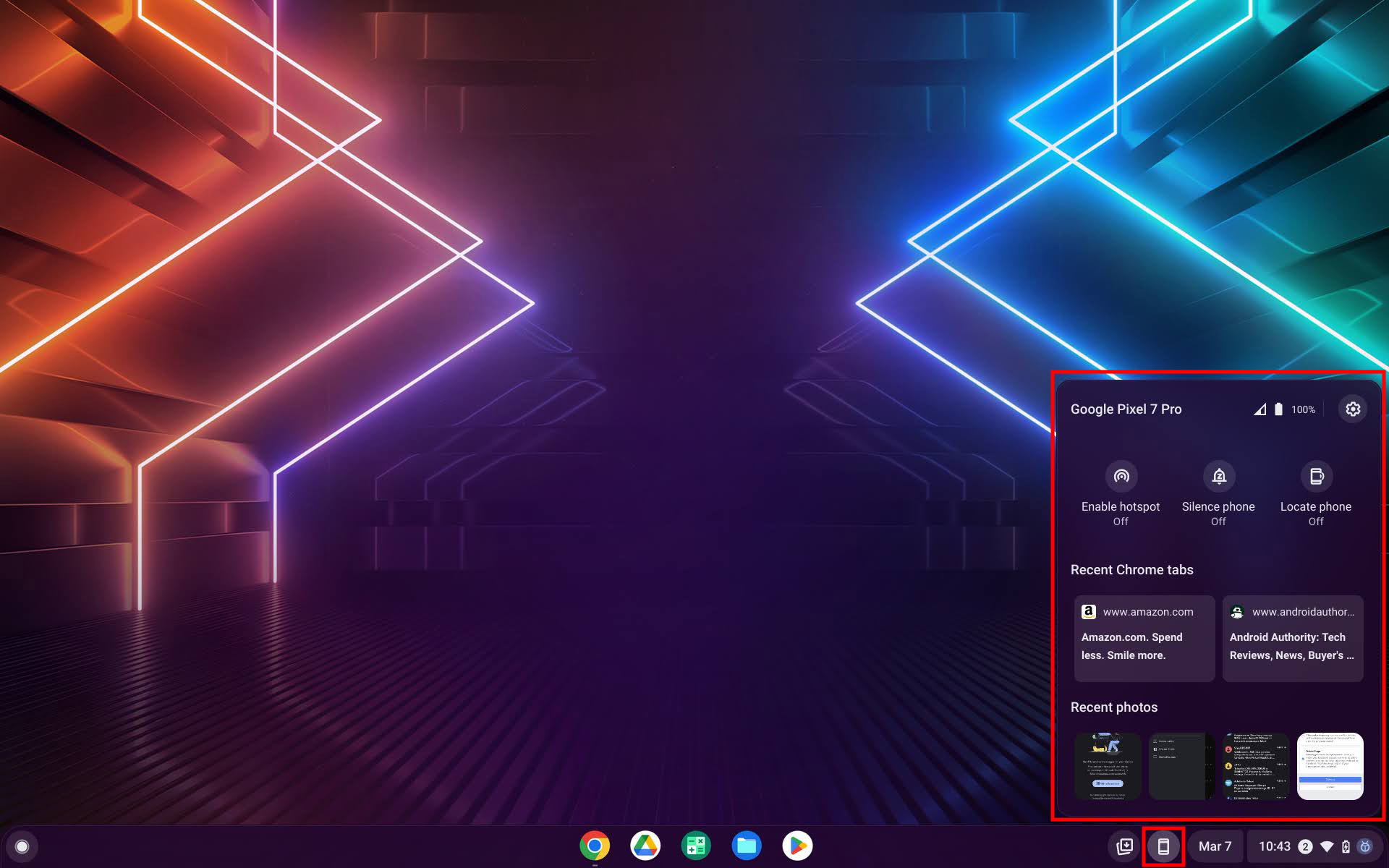
Now that you’re all set up, you’ll see a phone icon on the right side of the screen in your taskbar. Tap or click on it, and you’ll see a few options. These include Enable hotspot, Silence phone, and Locate phone. You’ll also see network and data information here, and your phone notifications will show up in this section. You’ll also be able to see your recent visited pages and photos.
Using this section is pretty straightforward. You’ll be able to access all your phone’s information and features here.
What else can you do with Chrome OS Phone Hub?
The feature isn’t quite as helpful as we would wish, but it has some nifty tricks up its sleeve, and more will continue to be added in the future. You can see all the features from the Settings.
How to access the Chrome OS Phone Hub settings
- On your Chromebook, open the Settings app.
- Go into Connected devices.
- Tap on your smartphone, under Connected devices.
- Here, you’ll see all the options and features available.
Now that you know where to go, it’s time to talk about what each feature does.
What is Smart Lock?
This is a feature used to unlock your devices more easily. It allows you to bypass the lock screen security measures when specific conditions are met. For example, you can use it so that your phone asks for no authentication when being carried, in a specific location (like your home), or when a trusted device is nearby (such as a smartwatch).
In the case of Chrome OS Phone Hub, it will make it so that your Chromebook requires no authentication when your phone is around.
What is Instant Tethering?
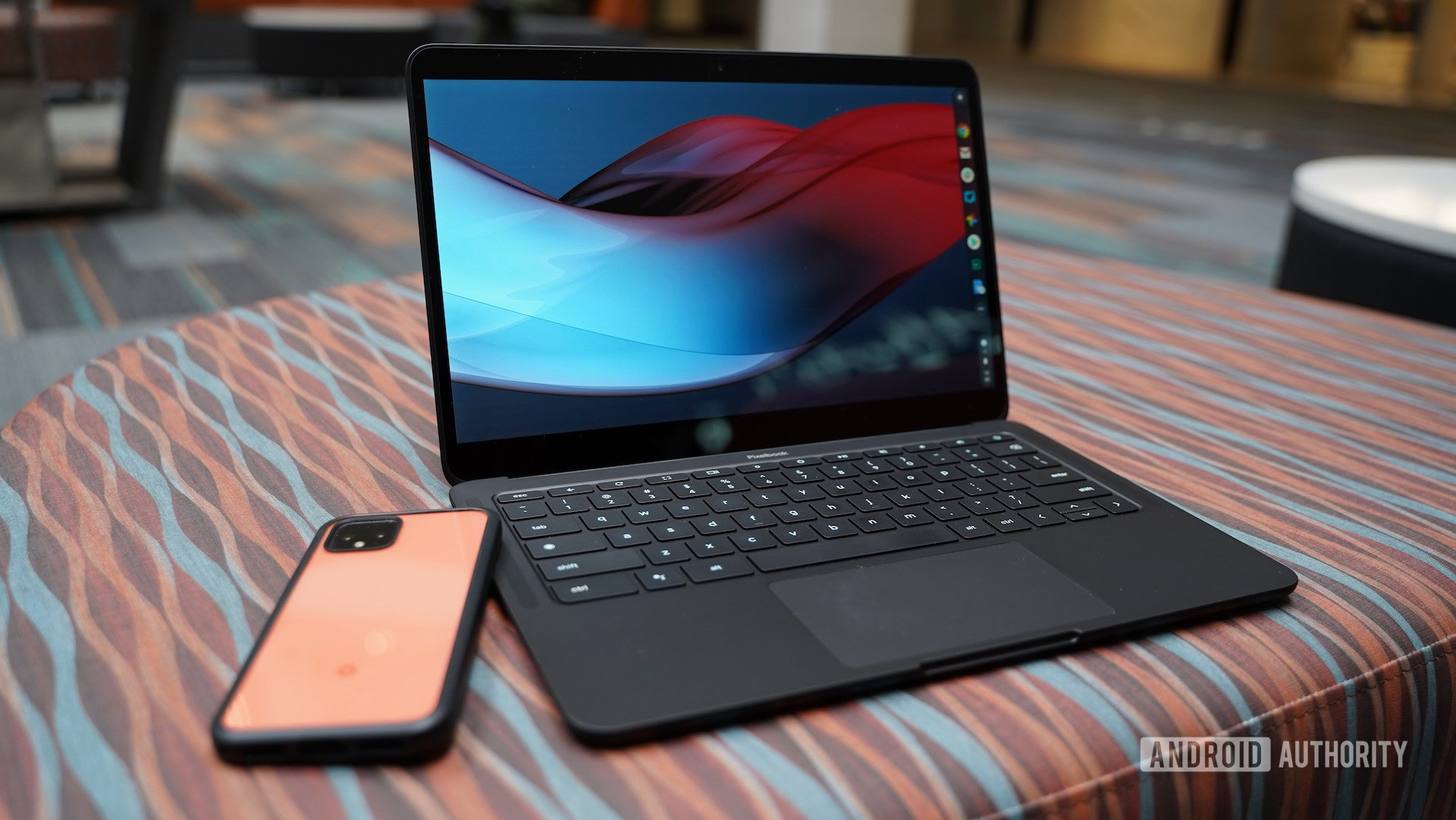
Instant Tethering makes it possible to share your phone’s internet connection to your Chromebook. This means that you’ll be able to use your Chromebook as long as you have a data connection on your handset, and it’s within close proximity to your Chromebook.
About the Phone Hub settings
Under Phone Hub, you should see a couple of options: Recent Chrome tabs and Notifications. Toggling these on allows your Chromebook to pull said information from your phone, allowing you to easily access such information when using your Chromebook, without needing to look at your phone.
What about Wi-Fi Sync?
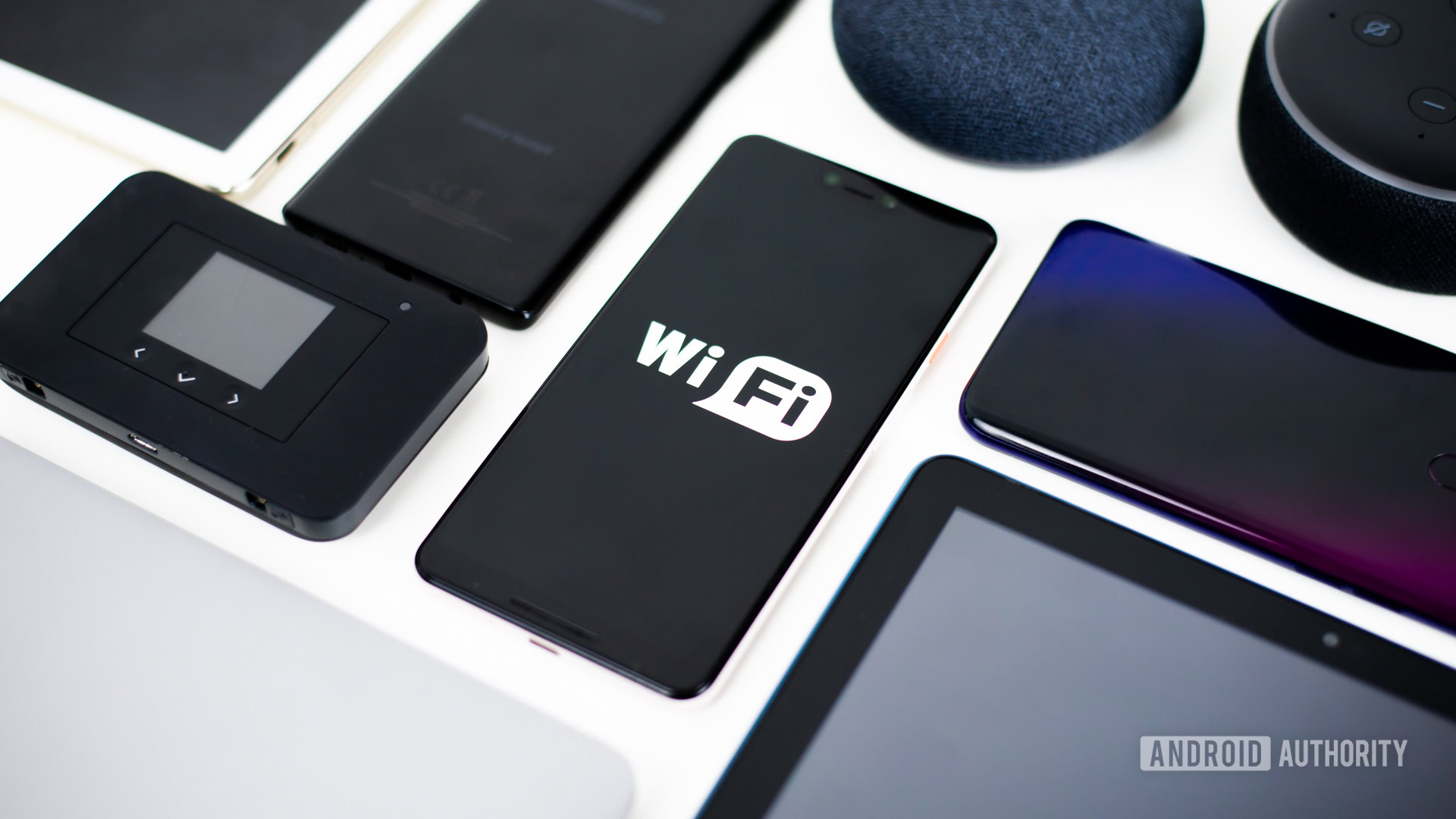
Instant Tethering will keep you connected with mobile data, but what if you’re within Wi-Fi reach? That’s what Wi-Fi Sync is all about. This feature will sync Wi-Fi network credentials between both devices. This means your Chromebook will connect to a Wi-Fi network when you access it from your smartphone. You won’t need to input passwords on both devices.
FAQs
Sadly, making calls through the Chrome OS Phone Hub isn’t possible yet. It’s a very requested feature, though, so chances are it’s in the plans.
While this would be a fantastic feature for us double-phoners, you can only link one device at a time to Chrome OS Phone Hub.
The only requirement is that your phone runs Android 5.1 or higher.
Your Chromebook needs to run Chrome OS version M89 or newer to run the Phone Hub.